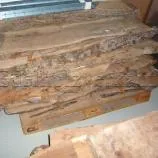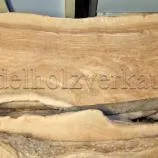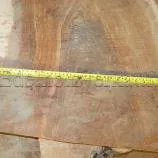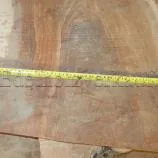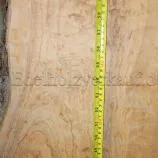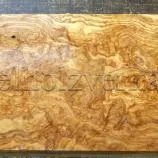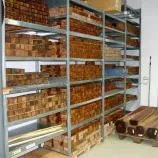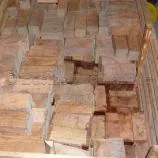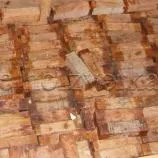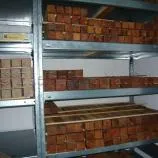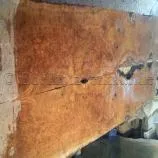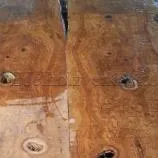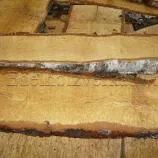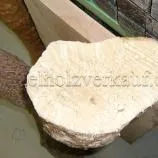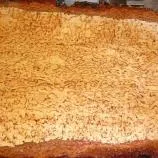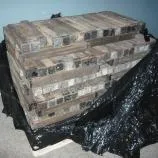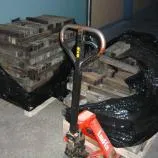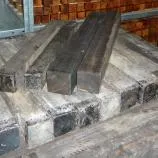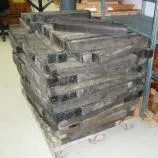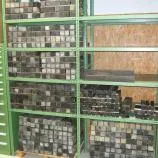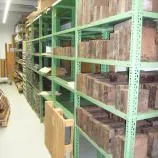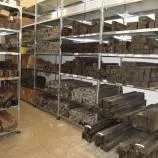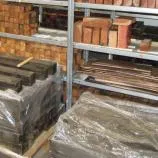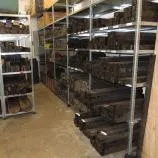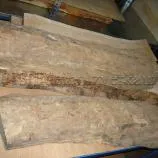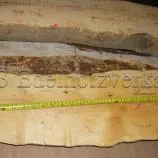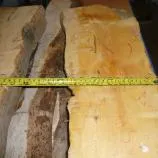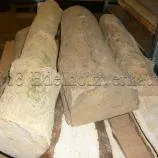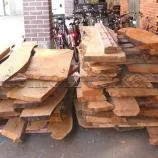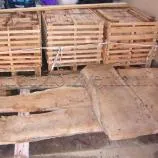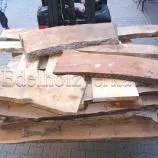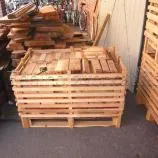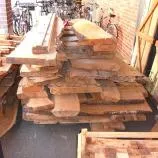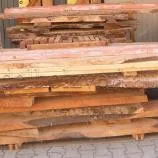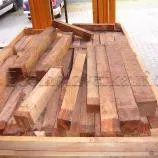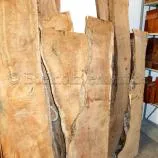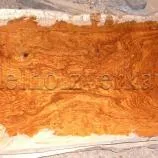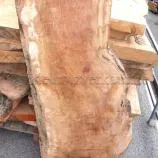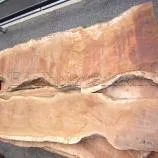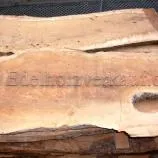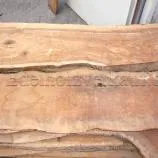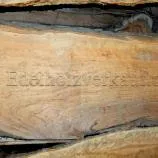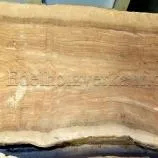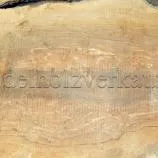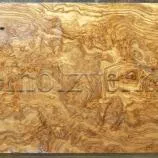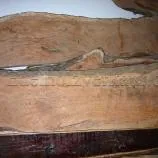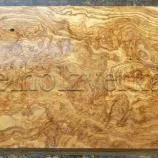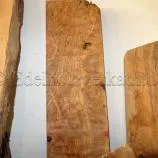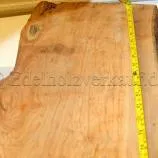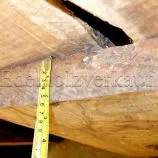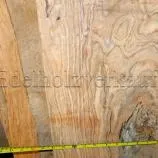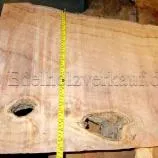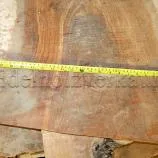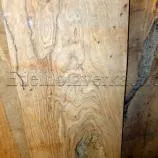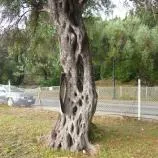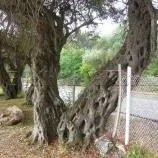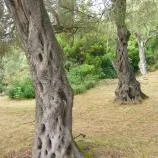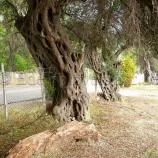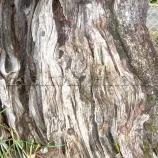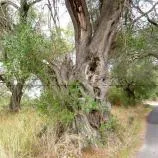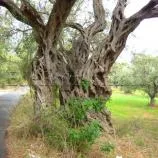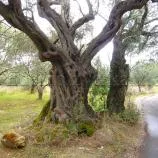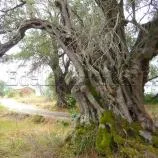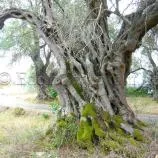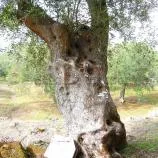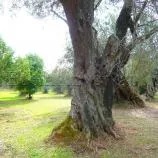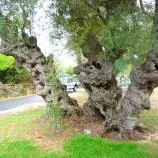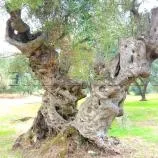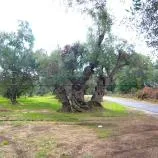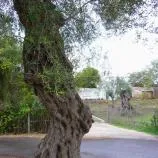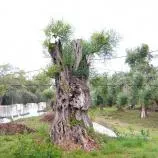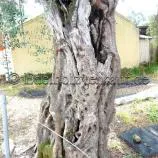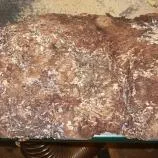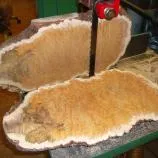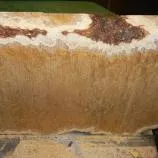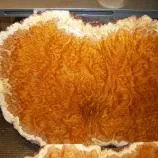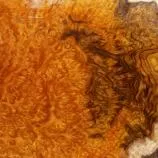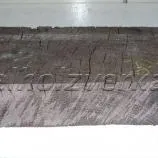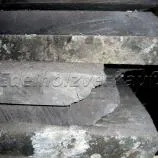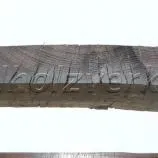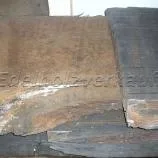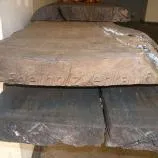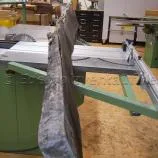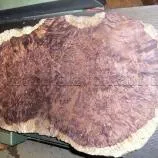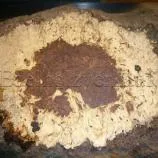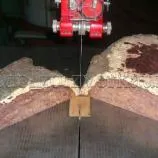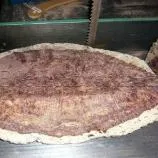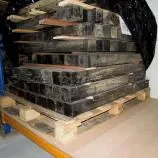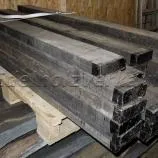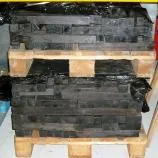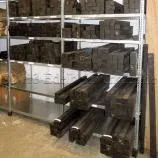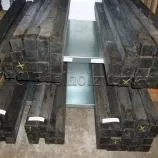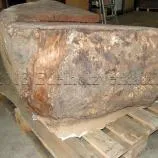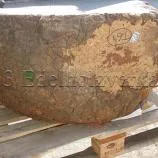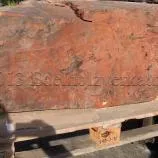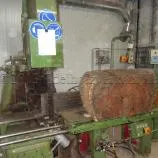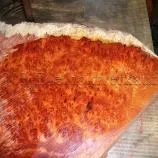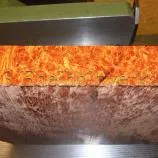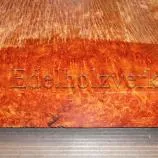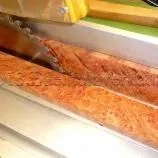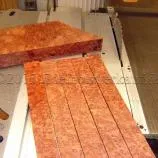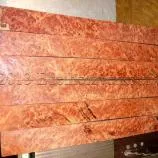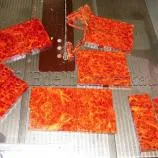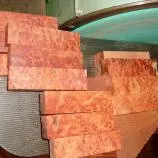Shipping country
Wood Species
News
One of our most beloved and beautiful woods is certainly olive wood, not the common species, growing fast in Portugal, Spain or Italy, nearly always grained boringly and coarsely. This olive wood comes from trees, which were often bred and artificially fertilized for this purpose and therefore mostly show little exciting grain and are straight grown. Our olive wood, like all our other woods, is carefully hand-picked and comes from wild grown olive trees that are often centuries old, which the Venetians planted at the Mediterranean Sea in the 16th century. Even today, they are still different from all other varieties of olive trees, as they grow slowly and devoured, making their wood something very special, the pictures show this. We now have a few tons of them in stock again, and since we generally only offer dry wood to our customers, ready for immediate working, many of these pieces of olive wood will remain in our shelves for a few more years until they are slowly and gently dried to such an extent that we can sell them with a clear conscience. This distinguishes our business from the peasant competitors who sell fresh wood, with whom you will experience unpleasant surprises, as the wet wood will warp and tear.
Due to strong demand we had to replenish our stock with Karelian curly birch. Of course, the wood is not fresh, but varefully and slow dried and only freshly arrived with us, so that it can be processed immediately at 7-9 % relative wood moisture.
As before, we have selected and sorted only the best and finest grained planks from a large quantity of many tons of this wood for our customers. You can find these jewels in our category Curly Birch in our shop.
We are glad to be able to offer our customers ebony in old, seasoned and dry quality. Recently we have been able to buy a larger quantity of a few tons good quality and large diameter ebony sawn timber and squares that have been in stock for years aready. After a long period of sorting for colour, quality and freedom from cracks, they are now stored in our new warehouse and will be available and can be ordered by our valued customers in our shop.
It was a lot of work to check, grade and sort several tons of ebony, to carefully stack them with stacking strips into the storage racks and to put them in catagory position. But for us it goes without saying that we only offer our customers good quality products in a broad assortment and the best quality. After all, we have what is presumably the largest online stock of ebony available, which can be ordered according to mostly individual pictures and whose woods are dispatched promptly on the working day after receipt of payment. Thousands of customers have found ebony for their needs at our shop already, and we are happy to have a lager quantity of ebony in stock again, so that we can supply this worldwide demand from Berlin!
Buchsbaum gehört zu den eher selten anzutreffenden Hölzern im Holzhandel, und obwohl ich persönlich eine besondere Vorliebe für dieses seltene Holz haben, führt dieses Holz doch eher ein Nischendasein in unserem Sortiment.
Umsomehr haben wir uns gefreut, als wir jetzt im Nachlass einer großen Holzhandlung ein paar wirklich riesige Stücke Buchsbaum ausgraben konnten!
Mit Breiten von fast 25 cm gehören diese Stücke zu den absoluten Ausnahmen, solche uralten Stämmchen wachsen nur in den Pyrenäen und haben dort sichert Hunderte von Jahren benötigt, um so große Stämme zu bilden.
Bei aller Freude über den Kauf dieser Pretiosen wird unser Dilemma nun sein, wann und wo wir den ersten Schnitt in solch ein seltenes Stück Holz machen werden. Was schneidet man daraus? Ist das nicht fast schon Frevel?
Ich kann mir schon vorstellen, wie das alles endet: wahrscheinlich werden diese Jahrhundete alten Stücke aus lauter Ehrfurcht und Bewunderung unantastbar bleiben. Bis dann in ein paar -zig Jahren bei einer Lagerräumung oder einem Umzug jemand diese Stücke wieder erneut findet, sie mit Kennerblick untersucht um dann am Ende zu sagen: sowas darf man doch nicht zersägen....zurück ins Regal!
Last month we were at the Mediterranean sea to inspect and check a batch of olive wood squares. On this occasion, the opportunity arose to sift and buy a large quantity of particularly fine and really beautifully grained sawn timber from centuries-old olive trees, all cut into practical 50-65 mm thick planks. Even though these planks will be stored in our climate-controlled warehouse for several years before they are dry enough to be sold, we will show you a selection of pictures of these uniquely beautiful and unlike any other piece of olive wood. You can hardly imagine our joy when we were able to unload the lorry load of fragrant olive wood here and finally were able to take possession of the superbly grained planks - such unique beautiful wood is a very special pleasure for us, too, as routine traders in the trade with special and rare precious woods.
During this trip we visited many addresses in search of especially beautifully grained very old and wide planks of this wood. The centuries-old olive groves, which are still cultivated today, with their age-old, rugged tree giants, the often bizarre looking trunks and growth forms have always reliably triggered a step on the brakes and a subsequent photo stop with many shots taken. The photos of these natural monuments are shown here, especially unique are the trunks that look like braided braids, which often reach a diameter of about 1 meter and certainly took several hundred years to form these bizarre shapes. It is also noticeable that in very old trunks the inside of the tree trunk is almost completely decayed and hollowed out, but the tree nevertheless forms powerful new shoots and carries very good quantities of olives. Not for nothing is this tree the symbol of fertility, longevity and peace!
Wirklich schönes Goldfield-Maserholz ist immer sehr schwer zu bekommen. Wir haben ein paar besonders schöne und makellose Maserknollen von beträchtlicher Größe zu Platten aufgeschnitten und diese werden demnächst in unserem Shop zu kaufen sein, vorrangig in der Form von Messergriffen und Pen Blanks.
Bog oak is a fascinating material, since centuries this ancient and weird looking jet black material fascinated people and occupied their fantasies. The wood has been widely used in arts and crafts and is nowadays more than ever a precious wood, only high quality and fine objects, furniture parts and handicrafts are made from it. By long experience we have become experts in bog oak, so here are a few explanations for handling, storage and valuation of this intricate wood! Bog oak is not rare at all, almost every day logs are found in northern Europe, during earthworks in river courses and sand or gravel pits excavating machines dig out such logs, usually being a real nuisance to the workers. Once found stuck in the earth, they often are often extremely heavy and cannot be removed easily, often even a crane has to be fetched to help the hump to be removed. If this annoyance finally is removed, the chunk is retrieved and the work can be continued, but where to put the whopper? Even if the trunk is still reasonably intact and not heavily decomposed and cracked, a rapidly progressive process of decay and cracking starts, which can lead to complete destruction of the wood especially in warm weather or during frost in a short time. One can cover the logs by foils, but this almost always starts immediately putrefaction by fungus and mould growth, or one can irrigate the wood permanently with a lawn sprinkler and preserve the state for a while, but immediately milling by a sawmill into boards has been proven the safest method to save this valuable yet tricky timber. However, sawmill owners and workers are not popular with bog oak logs in most cases, there will always be sand or stones inside the log, and these will fairly reliable ruin any expensive saw blade...After being cut to boards the colour of the bog oak can be evaluated: most valuated of course is a deep jet black colour, but this colour only develops under some happy combinations of factors such as wood ingredients, iron ions in water, lack or exclusion of oxygen. Often bog oak logs only show dark yellowish grey to light brown colours, most are coloured brown to grey, which, of course, are significantly less rated colours. After being cut in the sawmill long years of storage in rooms with different humidity levels and air movement conditions follow for the boards. After several years the boards are then hopefully fairly seasoned, accompanied by a lot of times restacking, rearrangements in other rooms and a lot of patience, so that they may be exposed to normal climatic conditions. Under these normal conditions, the wood then dries down to a relative humidity of about 10%, thus, the bog oak can be processed as usual wood. During this air-seasoning the wood usually releases large internal tension whilst reducing the humidity from nearly 100 % down to only 10 %, that will cause extreme distortions, seasoning checks, severe cracks, heavy warping and all possible other distortions. You will find some photos of such pieces of crooked wood in the photo gallery. Thus, any drying of bog oak must take place really very slowly and gently and constant monitoring of the moisture content is essential. Despite utmost careful drying bog oak always contains more or less cracks, soft and punky rotten spots or parts discoloured by fungus have to be cut away, so in the end only about 30-50% of the salvaged wood can be gained. The waste rate of bog oak boards increases dramatically, the longer and bigger the dimensions of the desired blanks are. Cracks, checks, knots and other defects can even push the waste rate to 80 - 90%. We use these smaller chunks of wood for a variety of other purposes, and even when cutting fixed sizes, those small sections are grouped into assortments. This pre-fossile, thousands of years old magical wood is just worth to be met with special respect!
We are happy to show you some photos of our latest aquisition: we could achieve two really first grade rosewood burls from Honduras. These burls have veneer quality and are really flawless, no checks, cracks or bark inclusions can be found. The whole burls consist of finest swirly grained wood and show unique figured structure as we have seldom seen before. Besides this an amazing colour offering nearly the whole range from bright to deepest dark reddish brown colours distinguishes this one-of-a-kind rosewood burls. Please see the enclosed photos of these true gems!
Sometimes you just have to be patient to get a real rarity: After Mercedes-Benz had failed so badly with their four-wheeled Maybach dinosaur, for a long time there was no Amboyna burl on the market worthy of the name. In order to produce the Maybach from 2002 onwards, all major veneer manufacturers had to enter into supply contracts with the manufacturer in order to be able to supply this veneer in 1A quality and the required quantity on a long-term basis. With a demand of well over 10 m2 per vehicle, it was believed that a large quantity of Amboina veneer would be needed in the long term to ensure the long-term supply of the manufacturer or its suppliers. As a result, all the quantities of Amboina burl available on the market flowed to Maybach or its suppliers, who processed this extremely rare and expensive wood almost completely into veneers in order to be able to comply with the supply contracts. After the production of the Maybach was stopped in 2012, huge quantities of Amboyna veneer still lie on the shelves of the suppliers, the market for the veneer is completely saturated, new burls have hardly been imported due to the oversupply, and the quantities of burls available on the world market were already very small. We were now able to buy a large and beautiful burl, which fortunately has not yet been processed into paper-thin veneers, but which comes from the iron stock of one of the suppliers and still had its natural shape. Of course, there was a truly princely price to pay for this rarity, and the tuber was only very little of its inner value to be seen - the full risk lay with the buyer, us! After the payment came the day of truth, when this burl was carefully cut into different plates and slices on a log band saw and after long consultation of all involved. To make a long story short: our expectations were exceeded, the grain inside the tuber is really spectacular, very fine and really bright red, without bark ingrowths, foxing, lazy spots or "baldness", spots with little or no grain! After moistening, the wood develops a uniquely beautiful lustre, optical depth and the incredibly fine structure with all its wavy grain, burl eyes and sapwood colours is truly unique! Anyone who ever holds this wood in their hands will know the fascination of this flawless material and why for centuries this very noble and rare burl wood has been one of the most expensive woods on the world market, if it is not by far the most expensive wood used for furniture, veneers, furnishings and handicrafts! On the photos you get an impression, which metamorphosis the wood goes through, from the raw, rather unsightly tuber up to finished pairs of knife handles, still lying on the table of the saw! We are happy to be able to offer our customers real 1-A-Amboyna burl again.

